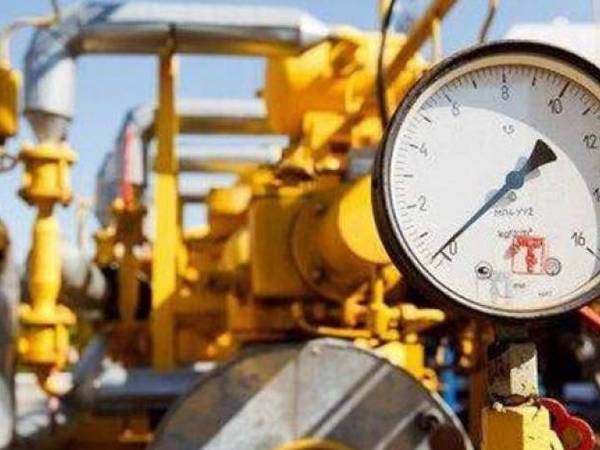Iran's summer power crisis, which cut electricity to industries by half and caused widespread blackouts, has now led to urgent warnings about a severe gas shortage this winter.
As Iran’s gas demand is expected to soar to two billion cubic meters per day over the next 15 years, Manouchehr Daftarian, head of the Iranian Gas Engineering Association, has urged the Supreme National Security Council to address the current gas imbalance. He warns that if this issue is not resolved promptly, the country will face severe and unmanageable challenges.
During the summer, Iran faces a 14,000-megawatt (MW) electricity shortage, while in the winter, it struggles with a daily gas deficit of 250 million cubic meters (Mcm/d). These shortages cost the country's industries at least $8 billion annually.
While Iran ranks second after Russia in terms of gas reserves, holding 34 trillion cubic meters, it has not developed new fields. Additionally, its largest gas-producing field, South Pars, has experienced a pressure drop and a decline in productivity.
Iran's annual gas demand has risen from 153 bcm in 2013 to 245 bcm in 2023, reflecting a 7% annual increase over the past decade. The residential sector and power plants have driven much of this growth and are expected to continue showing strong consumption increases through 2040.
Due to the lack of growth in renewable energy, the extent of electricity and gas shortages in Iran has spread to all seasons in recent years. The peak of the electricity imbalance, however, occurs in the summer, while the peak of the gas shortage happens in the winter.
Daftarian has also warned that unless gas consumption is halved, the imbalance will not be resolved in the coming years.
“This winter, there is currently a gas imbalance of about 250 mcm/d. The issue is that our problem is not just now. In 2027, even with enhanced energy consumption, the gas demand will be 1,500 mcm/d, but the government will only be able to supply 400 mcm/d,” he recently said.
In January, the National Development Fund (NDF) of Iran also predicted that by 2040, the country's gas production would only be able to meet "one-third" of domestic demand.
According to its estimates, domestic gas demand in Iran will nearly double by 2040, reaching over 1.4 bcm/d, while production levels are expected to almost halve, dropping below 493 mcm/d. Additionally, the NDF projects that the greatest growth in gas demand will occur in the residential and power generation sectors.
The Research Center of the Iranian Parliament published a similar report last summer, indicating that in addition to the 250 mcm/d gas shortage in winter, there are shortages in other seasons as well. Overall, the average gas imbalance throughout the year is about 123 mcm/d, and it is projected to peak at 460 mcm/d by 2040.
Why is Iran's gas production declining?
About three-fourths of Iran’s gas is produced from the South Pars field, which is shared with Qatar. According to Iran's Ministry of Petroleum, this field has entered its second half-life since last year, and with the ongoing pressure drop, gas production from South Pars will decrease by 10 bcm per year starting this year.
This decline will significantly impact Iran's overall gas production and contribute to the growing energy shortage in the country.
In contrast, Qatar began gas production from this shared field 10 years earlier than Iran and has already produced 2.8 trillion cubic meters of commercial gas (pure methane) from it.
Iran claims to have produced two trillion cubic meters of "raw" gas from South Pars so far, although it is not precisely clear how much of this produced gas is pure methane and how much consists of other impurities such as water and heavy gasses.
Years ago, Qatar addressed the pressure drop issue in this field by installing 20,000-ton platforms, which are 15 times larger than those on the Iranian side of South Pars, and are capable of carrying massive compressors. Since 2022, Qatar has signed a $29 billion contract with global oil giants, aiming to increase gas production from this field by 35% within the next three years and by approximately 60% by 2030.
Following the JCPOA, known as the Iran nuclear deal, Tehran signed a $5 billion contract with a consortium led by French company Total for the development of Phase 11 of South Pars. Half of the contract amount was allocated for constructing a 20,000-ton platform equipped with two massive compressors.
After the US withdrew from the JCPOA in 2018, Total pulled out of the project, and the Chinese partner, CNPC, also abandoned it shortly thereafter. The technology for constructing these facilities is exclusively held by a few Western companies.
South Pars accounts for over 40% of Iran’s gas reserves, and while the Islamic Republic could somewhat increase its gas production by developing new fields, the investment in the upstream oil and gas sector has been insufficient. Over the past few years, the average annual investment in this sector in Iran has only been $3 billion, which is half of what it was in the early years of the previous decade and one-seventh of the 2000s.
Additionally, 80% of Iran’s active oil fields are in their second half-life and lose 8 to 12% of their production annually. The government's current focus is on developing new oil fields to prevent a decline in crude oil production and exports, leaving gas projects as a lower priority.
According to the World Bank, Iran flared 20.4 billion cubic meters of gas last year. The International Energy Agency estimates methane leakage from gas facilities in Iran at 8 billion cubic meters annually.
In the grand scheme of things, Iran would need just around $5 billion to stop flaring and a few billion more to halt methane leaks. The government, however, has not deemed this a priority amidst the country’s financial crisis and budget deficit.
